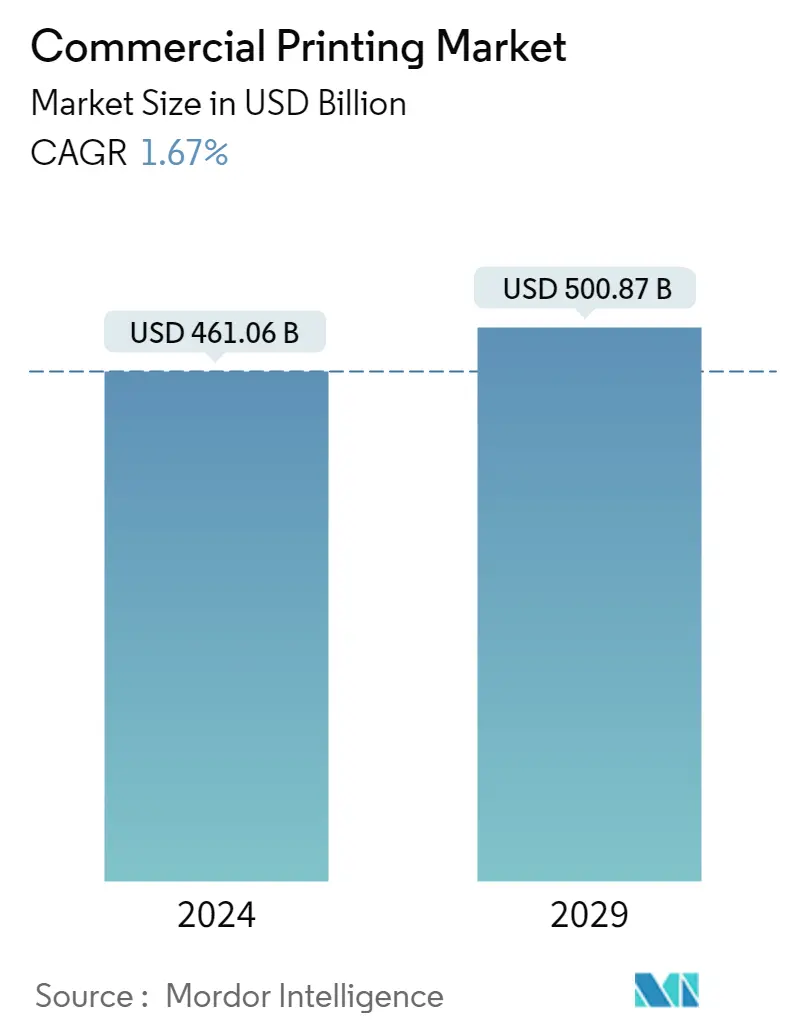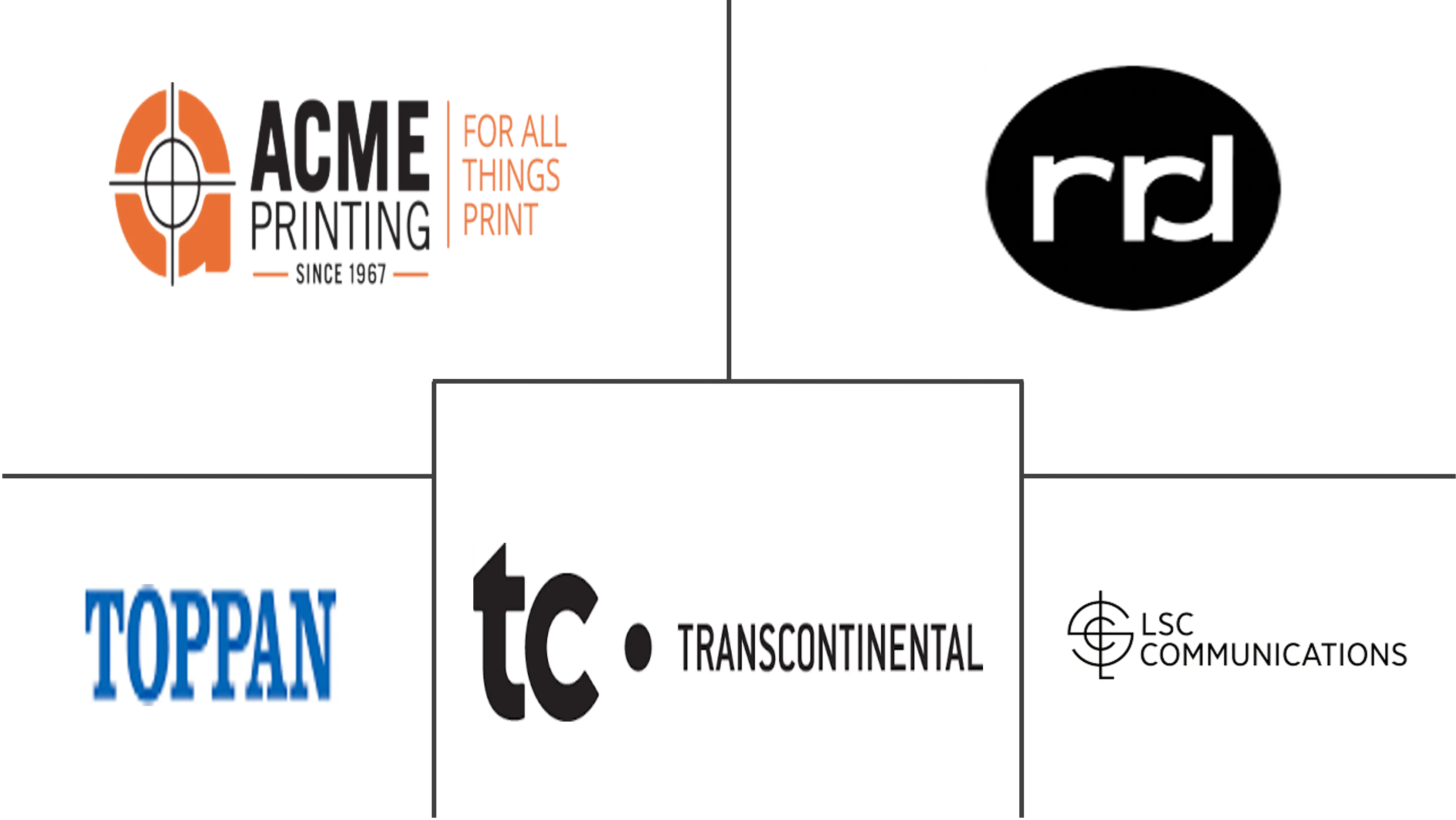Market Size of Commercial Printing Industry

| Study Period | 2019 - 2029 |
| Market Size (2024) | USD 461.06 Billion |
| Market Size (2029) | USD 500.87 Billion |
| CAGR (2024 - 2029) | 1.67 % |
| Fastest Growing Market | Asia-Pacific |
| Largest Market | Asia-Pacific |
Major Players
*Disclaimer: Major Players sorted in no particular order |
Need a report that reflects how COVID-19 has impacted this market and its growth?
Commercial Printing Market Analysis
The Commercial Printing Market size is estimated at USD 461.06 billion in 2024, and is expected to reach USD 500.87 billion by 2029, growing at a CAGR of 1.67% during the forecast period (2024-2029).
The growing advertising needs of enterprises across the world and extensive technological proliferation are the key factors driving the market growth. Many organizations are adopting commercial printers as they are more cost-effective and efficient for bulk printing.
- Including customized marketing messages in promotional and marketing strategies is one of the drivers of the commercial printing industry. There is a significant demand for personalized printed content, which is being catered to by commercial printing companies that use digital printing technologies. Such technologies include variable data printing (VDP), which enables the customization of images, text, and graphics on each printed piece. The short-run self-publishing industry witnesses a high demand for digital printing due to order flexibility, optimized stock handling, and minimization of time-to-market for printed content. This may also contribute to the growth of the commercial industry's spending.
- The applications for short-run production for a wide range are increasing. Some examples of these applications are books, direct mail, brochures, and catalogs. In direct mail, the conventional practice was to send the same message to many customers. However, digital marketing utilizes data to customize printed messages according to the person's interests, resulting in higher customer satisfaction.
- Sustainability is becoming increasingly important in businesses today. Commercial inkjet products are gaining traction as they use less power, produce less carbon dioxide, and are associated with cleaner air as they do not emit toner dust. Many companies are investing in inkjet printers to enhance their offerings, personalize packaging and messaging, aid clients in promoting their brands, and meet the seasonality of their demand. For instance, in 2021, DS Smith Iberia installed the EFI Nozomi C18000 Plus six-color single pass-LED inkjet printer in its facility in Lisbon, Portugal. The productivity of the Nozomi is expected to reduce the time to market and offer a printing quality equivalent to that of offset printing without the need for litho lamination.
- The printing industry has historically been labor-intensive, with a strong relationship between the trend in turnover and employment. Machinery design, digitalization, and computerization have significantly contributed to improving productivity and transforming this industry so that growth capacity is no longer linked to direct work. However, the rising raw material costs during the procurement process limit the operability of several players. The raw materials used in commercial printing include paper, ink, printing materials, and other chemical products. The feedstock prices are dynamic and fluctuate based on several socioeconomic factors, thereby hindering the business activity of the companies operating in the studied market. The last few years were tumultuous for the purchasing departments of ink manufacturers.
- The demand for commercial printing reduced during the COVID-19 pandemic. Many events were canceled, leading to a lowered demand for promotional materials. Many organizations have also moved to remote working, which may boost the trend toward paperless operations. Additionally, with customers spending more time online, advertisers are opting for digital media over other forms of media. Although event cancelations and remote work are expected to be temporary measures until the COVID-19 situation is under control, they may cause a lasting loss in demand for printed materials.
